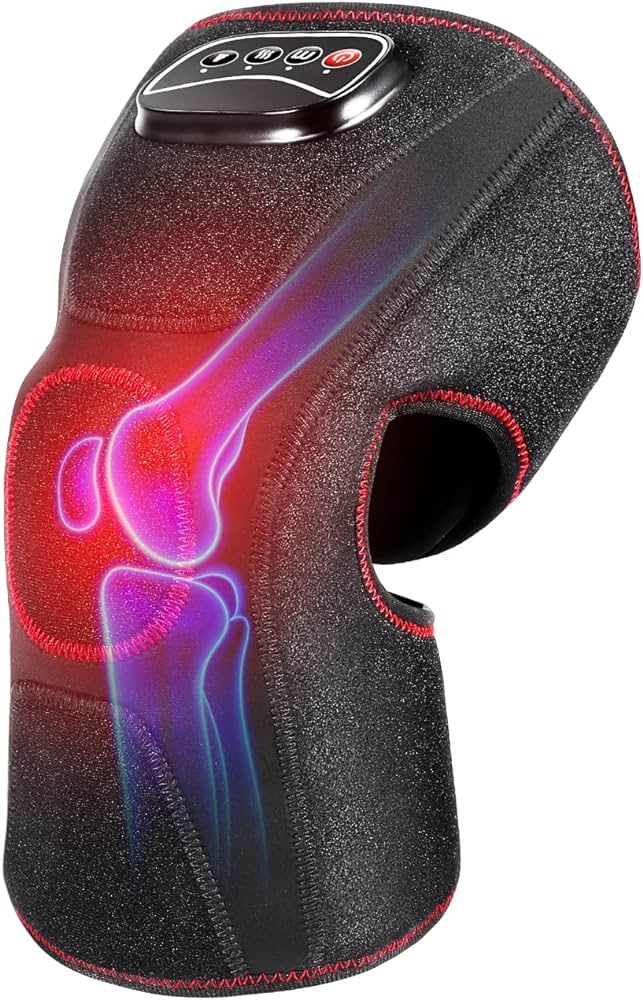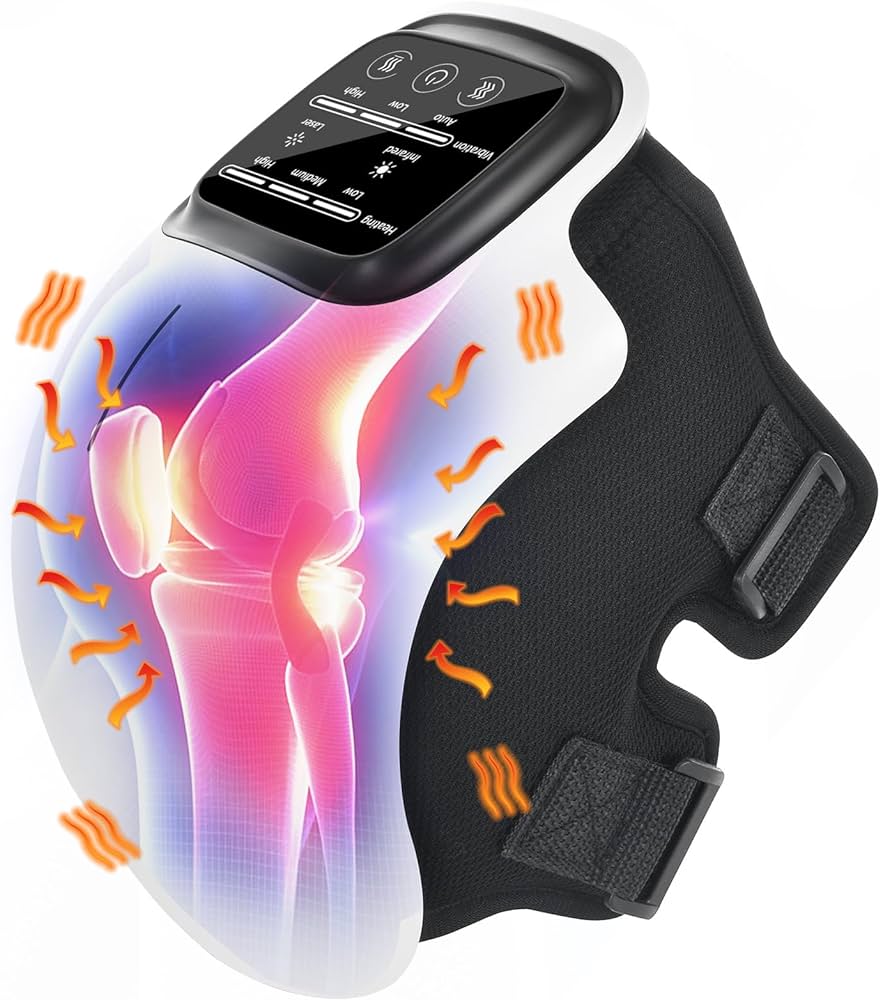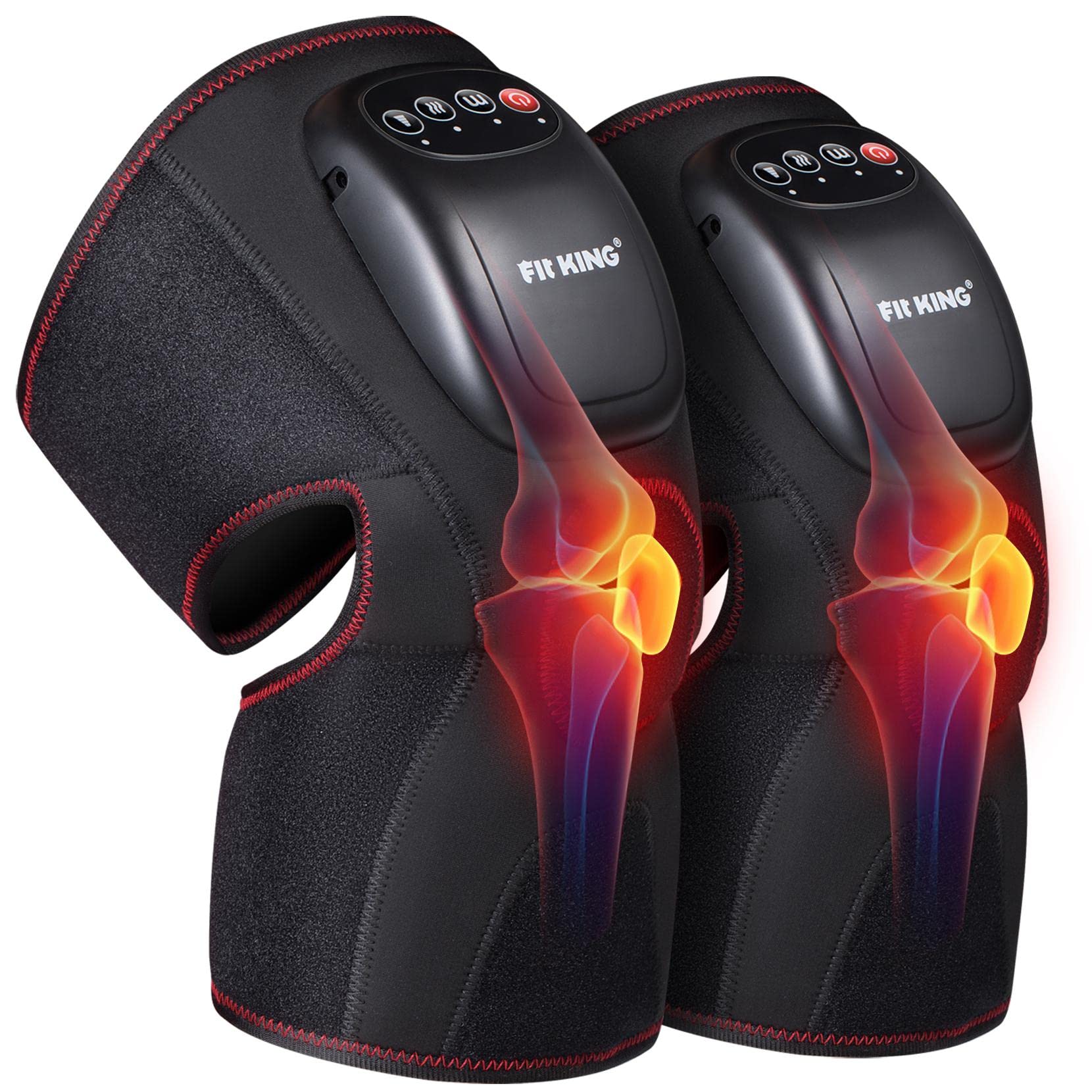Introduction
Knee pain can be a common issue that limits mobility and negatively impacts daily activities. In the quest for relief, many individuals turn to knee massagers as a potential solution. These devices are designed to provide targeted massage therapy to the knee area, promoting relaxation, pain reduction, and improved circulation. In this guide, we will explore the effectiveness of knee massagers by examining their benefits and considering the experiences of users.

Do knee massagers really work?
Understanding Knee Massagers
1.1. Purpose and Function
Knee massagers are specialized devices designed to provide targeted relief to the knee joint and surrounding muscles. They typically use a combination of compression, vibration, heat, or massage techniques to deliver therapeutic benefits.
1.2. Types of Knee Massagers
There are different types of knee massagers available, including handheld devices, wrap-around braces with built-in massaging mechanisms, and vibrating knee sleeves. Each type offers various features and benefits.
Benefits of Using Knee Massagers
2.1. Pain Relief
One of the primary benefits of knee massagers is their potential to alleviate pain and discomfort in the knee area. Massaging the knee joint can help relax muscles, reduce inflammation, and relieve tension, ultimately reducing pain sensations.
2.2. Increased Circulation
Knee massagers can stimulate blood flow in the knee area, enhancing circulation and promoting the delivery of oxygen and nutrients to the tissues. Improved circulation can aid in reducing swelling, supporting tissue healing, and promoting overall joint health.

2.3. Muscle Relaxation
The targeted massage provided by knee massagers can help ease muscle tension in the knee area. This muscle relaxation can lead to increased flexibility, improved range of motion, and a sense of overall relief.
2.4. Recovery and Rehabilitation
Knee massagers can assist in the recovery and rehabilitation process following knee injuries or surgeries. They can help alleviate pain, reduce stiffness, and improve circulation, ultimately facilitating the healing process.
2.5. Convenience and Portability
Many knee massagers are designed to be portable and easy to use. They can be used at home, in the office, or on the go, providing convenience and ongoing relief as needed.
User Experiences and Reviews
3.1. Positive Experiences
Many individuals report positive experiences with knee massagers, citing pain relief, improved mobility, and enhanced comfort as notable benefits. Users appreciate the convenience and effectiveness of these devices in managing knee-related issues.
3.2. Individual Variations
It is important to recognize that individual experiences may vary. The efficacy of knee massagers can depend on factors such as the underlying cause of knee pain, the severity of the condition, and individual responses to massage therapy. Some individuals may experience more significant relief than others.
3.3. Complementary Approach
For individuals with chronic or severe knee pain, knee massagers may be more effective when used as part of a comprehensive approach that includes other treatments such as physical therapy, pain medication, or exercises prescribed by a healthcare professional.

Proper Use and Techniques
4.1. Follow the Manufacturer’s Instructions
Read and understand the manufacturer’s instructions before using a knee massager. Follow the recommended guidelines for frequency, duration, and intensity of use. Different types of massagers have their own best ways to use them.
4.2. Positioning and Placement
Properly position the knee massager on the affected knee, ensuring it covers the targeted area. Secure straps or fastenings, if applicable, to ensure a snug fit.
4.3. Customize Intensity and Duration
The intensity and duration of the massage should be adjusted to your comfort level and tolerability. Start with lower settings and gradually increase the intensity as desired, while paying attention to any discomfort or pain. Different types of massagers have their own best time to use them.
4.4. Combine with Other Therapies
Consider using knee massagers in conjunction with other therapies recommended by healthcare professionals, such as exercises, icing, or heat therapy. The combination of treatments may enhance overall relief and aid in recovery.

Precautions and Safety Considerations
5.1. Consult with a Healthcare Professional
If you have a preexisting knee condition, injury, or chronic pain, consult with a healthcare professional before using a knee massager. They can provide guidance on the suitability of using a massager and offer recommendations specific to your needs.
5.2. Sensitivity and Personal Limitations
Be aware of any sensitivities, allergies, or personal limitations you may have. Adjust the settings and techniques accordingly to avoid any adverse reactions or discomfort.
5.3. Adhere to Time Limits
Follow the recommended time limits for each session as suggested by the manufacturer. Avoid extended or excessive use, as this may lead to overstimulation or potential skin irritation.
Considerations for Specific Knee Conditions
7.1. Osteoarthritis
For individuals with knee osteoarthritis, knee massagers may provide temporary relief by reducing pain and stiffness. However, it is important to consult with a healthcare professional for appropriate management strategies and to ensure the use of knee massagers aligns with the overall treatment plan.
7.2. Knee Injuries
If you have a knee injury, such as a sprain or strain, knee massagers may be used as part of the rehabilitation process. However, it is crucial to follow the guidance of a healthcare professional and avoid using the massager too soon or in a way that may worsen the injury.
7.3. Chronic Knee Conditions
Those with chronic knee conditions, such as tendinitis or bursitis, should approach knee massagers cautiously. The use of massagers should be discussed with a healthcare professional to determine if they are suitable for your specific condition and to ensure they do not aggravate any preexisting issues.
Explore Other Complementary Techniques
8.1. Heat or Cold Therapy
Combining knee massager techniques with heat or cold therapy may provide additional benefits. Heat therapy, such as using a warm towel or a heating pad, can help relax muscles and increase blood flow before using the massager. Cold therapy, such as using ice packs, can help reduce inflammation and provide pain relief after using the massager.
8.2. Stretching and Strengthening Exercises
Incorporating knee-specific stretching and strengthening exercises into your routine can complement the effects of knee massagers. These exercises can help improve joint stability, flexibility, and overall knee function. Consult with a physical therapist or healthcare professional for appropriate exercises tailored to your needs.
8.3. Healthy Lifestyle Habits
Maintaining a healthy lifestyle can contribute to overall knee health and potentially enhance the effects of knee massagers. This includes regular exercise, maintaining a healthy weight, and avoiding activities that may strain or put excessive pressure on the knees.

Conclusion
Knee massagers can offer benefits such as pain relief, improved circulation, muscle relaxation, and comfort. However, the effectiveness of knee massagers may vary based on individual experiences and the specific knee condition. Incorporating knee massagers into a comprehensive approach that includes other treatments, following proper use and techniques, and consulting with healthcare professionals when needed can optimize their benefits. Ultimately, the decision to use a knee massager should be based on personal preference, the severity of knee pain, and the advice of healthcare professionals. Enjoy the potential benefits of knee massagers and prioritize your knee health and overall well-being.

